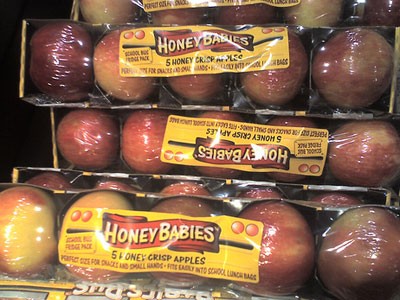Every so often you read an article that just prompts awe for the way its writer illustrates a global issue by homing in a single, nitty-gritty consequence that will resonate with readers from corporate executives to consumers trying to gnaw their way into a new package of batteries.
That was my admiring reaction last week to the New York Times story “Easier-to-open packaging? Thank high oil prices.”
Reporter Stephanie Clifford used examples from retailers, packaging firms and other experts to roll together a masterful story that is at once a consumer piece, an economic indicator story, a packaging-technology explainer and even a sort of green-business piece as she explains that high petroleum prices, which drive up the cost of plastic, have prompted consumer goods makers, packagers and sellers to seek alternatives to the dreaded clamshell that tenaciously encases so many products these days. The lede is priceless too, with a nod to all of the gadgets marketed to defeat the clamshell, and overall a sort of tongue-in-cheek tone livens up a substantive business and economy story.
Finding indirect consequences of economic gyrations from commodity costs to market moves to job market shifts, and taking a focused rather than kitchen-sink approach, can really result in some meaty and highly readable business features.
You could use this story as a sort of template for a local version, talking with area suppliers, manufacturers, retailers and marketing companies about the same topic, packaging. I spoke with an auto industry consultant recently, for example, who was advising a client on how to more cost-effectively package headlamps for shipment to reduce breakage and freight costs. A look at industry sites like Packaging Digest and IDS Packaging will give you an idea of the scope of the industry, from IV fluid bags to bar-code readers to adhesive tape. In other words, no matter what your beat, there’s bound to be a packaging cost-cutting or supply issue afoot.
If that doesn’t do it for you, however, consider applying the format of the NYT article to other economic trends. For example, food inflation is a concern across many industries from trucking to health care (commercial food service) to retailers like supermarkets and restaurants. Are chefs changing menus to feature specials with cheaper input costs? I ate at an upscale steakhouse twice over the past two weeks and there was nary a bacon bit to be seen, for example, when in years past they were plentiful on salads, baked potatoes and appetizers. A modest portion was provided on request, and it was clearly a cost-cutting move in a year when bacon prices have zoomed skyward. What similar “quirky economic indicators” can you turn up among food processors, markets and eateries?
Or, take a look at the effect of gold prices on retail jewelers, or the cost of cotton on hotels. (I saw some mighty skimpy towel supplies – and the housekeeping staff seemed loathe to part with a couple more – at an otherwise posh chain last week.) A $26 oil change was a whopping $37 recently, and the quickie-lube manager blamed it on the “price of oil.” I don’t know how my compact car could guzzle $11 more worth of 10-W-30 compared to a few months ago, but a look inside that industry – one most of us patronize – would make for a neat angle on petro prices, too.











